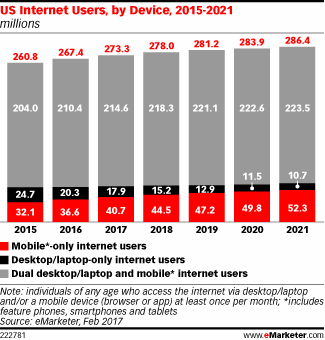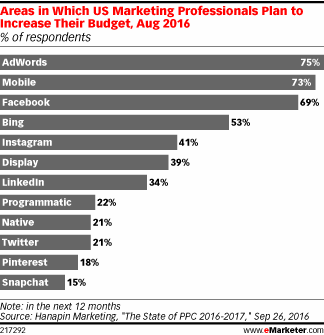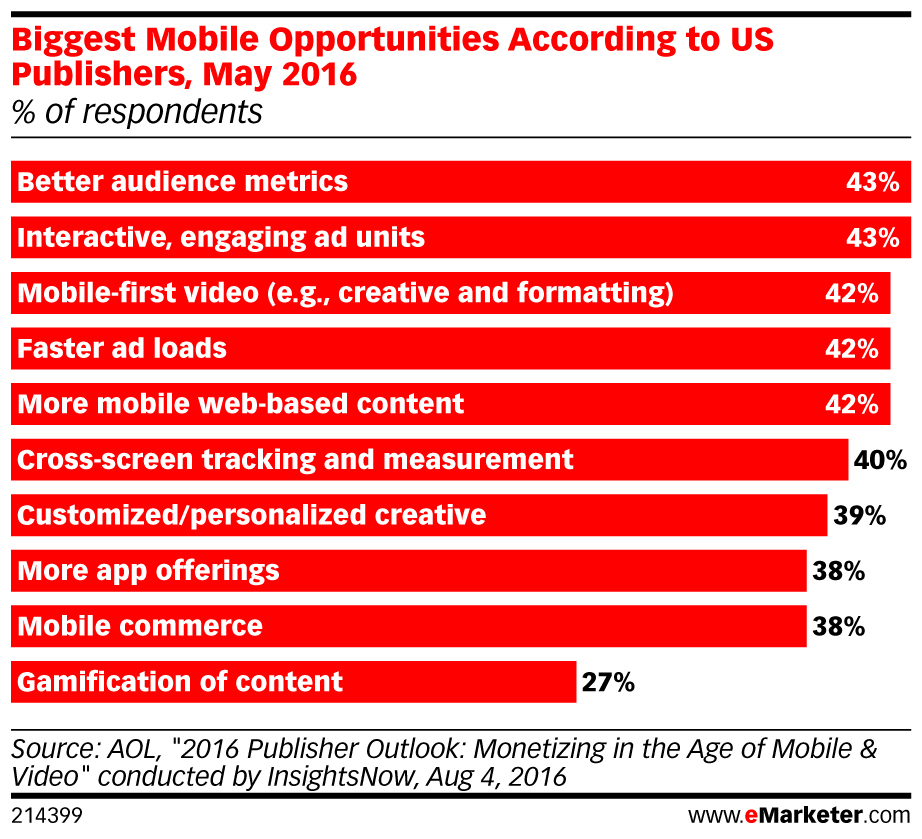When the new year starts, many of us make resolutions to achieve certain outcomes. Saving for a big vacation, getting in shape, making more time for family and friends…January is the time our resolve solidifies and we begin to take action (or we don’t, and that’s another story altogether). The same thing happens in the business world: the first month of the year is about taking your first steps toward executing on the operational and revenue plan (and about recovering from the holidays, but that’s another story too).
For many businesses, 2017 will be the first time any serious investment is made in mobile. Trends have been skewing toward mobile for long enough now that even the most stubborn holdouts are realizing they must invest in it to engage and understand their audience, among many other benefits.
By the time Q2 rolls around—and, newsflash: it’s about to—those businesses should be executing and starting to chip away at those goals. If a new or improved mobile application is on your proverbial resolution list for this year, here are five tips to help you make sure you are on track to deliver what is sure to be a transformative business change.
1. Approach Mobile as a Lifecycle
For a business, mobile is so pervasive now that it’s impossible to ignore. Mobile is also increasingly sophisticated—and so are mobile users. They won’t be satisfied with a mobile app that offers nothing more than a tiny version of the company website. The app must provide unique value that can only be enjoyed on a mobile device (by leveraging the device’s location tech to power indoor wayfinding, for example).
Creating mobile experiences that provide unique value requires a new, full-cycle approach to the technology. As a tool that has the power to impact many areas of the business, a mobile application is a long-term investment that requires careful planning of how you will build, engage and monetize your audience, not just get an app in the App Store.
If mobile is part of your plan this year, make sure you view (and invest in) it for what it is—a transformative business tool, not a quick-fix. You may even have to do some reshuffling in your org structure to support today’s customer journey, but it will be worth it.
2. Focus on Delivering Real, Measurable Value
Most users today are too savvy to be duped by clickbait and other advertising shenanigans. It’s harder than ever to earn, nurture and maintain their attention and trust. After all, only 23% of app users remain engaged for more than three days after downloading an app. If your content or mobile experience is missing the mark, you need to know about it so you can optimize and improve. Make sure you’re digging into specifics like:
- Whether your mobile app user base / audience is steadily growing
- The quantity and quality (type) of conversions happening through your app, such as app downloads and installs, in-app content consumed, in-app or in-store purchases and so on
The best mobile solutions deliver value to end users and the business. They can streamline business operations, reduce spending, improve communication and more. Look for cost efficiencies like going paperless, reducing customer wait time, improving appointment compliance, etc. as metrics to help tell that story.
Proving the value of your investment in mobile is easier than ever, thanks to new technology and resources like big data, mobile engagement (proximity messaging), indoor navigation, asset tracking and mobile audience engagement / monetization. It may be time to expand your solution to integrate more of these technologies.
3. Leave “Spray and Pray” in the Dust
There is no better way to personalize engagement and make it relevant than with mobile. The days of “spray and pray” marketing are over—users expect content and campaigns aligned with their tastes and interests. Every mobile moment and interaction counts, especially the first one. In 2017, brands must optimize that crucial first moment into a long-term partnership relationship with their customers if they have any hope to retain those users.
4. Give Mobile-First Paid Media a Chance
Today, 70% of internet users say they dislike ads on their mobile phones, and a significant source of that dissatisfaction is ads designed for desktop and awkwardly adapted for mobile devices. Because mobile is so pervasive today, however, there is now a wide array of paid media formats designed specifically and exclusively for mobile. These range from mobile-optimized banners to campaigns that leverage the user’s smartphone accelerometer to playable ad formats that boost engagement in a way that feels natural, not intrusive.
Like mobile applications, mobile marketing done right also provides serious business benefits. According to a recent survey of mobile publishers, mobile monetization delivers unique advantages including better analytics, more engaging and flexible campaigns, and more:
5. Make Decisions Based on Your Own Data
There are two types of brand marketers: the “monkey-see, monkey-do” type who adopt tactics based on what others are doing, and the “brand warrior” type who make trends their own by translating them into initiatives that make sense for their brand. If you want to be among the latter, you must have a deep understanding of your organization’s goals, what’s moving the needle and how to turn your 2017 budget into more leads, pipeline, revenue and market share. If you aren’t already fluent in what mobile brings to the table and how to capitalize the wealth of data that your users share with you, it’s time to get with the program. There’s still time to make good on your resolutions!
For help getting started, contact a Phunware mobile expert today.











